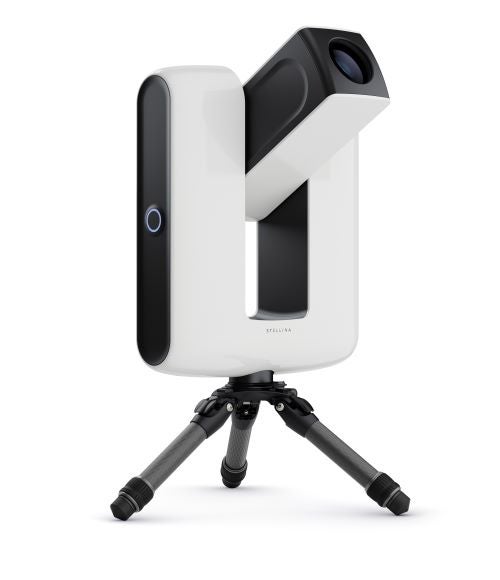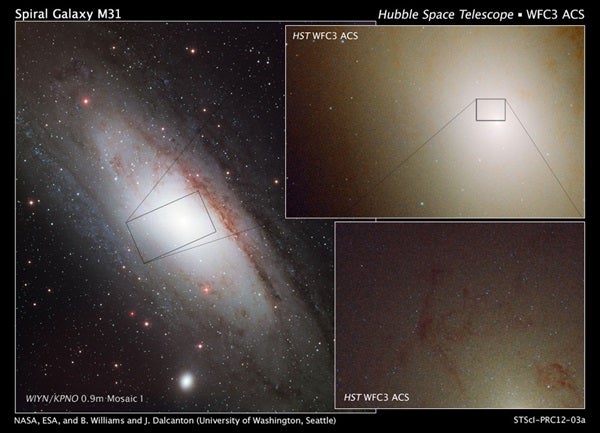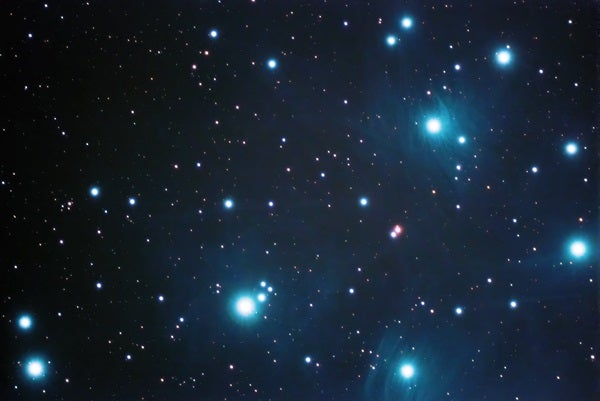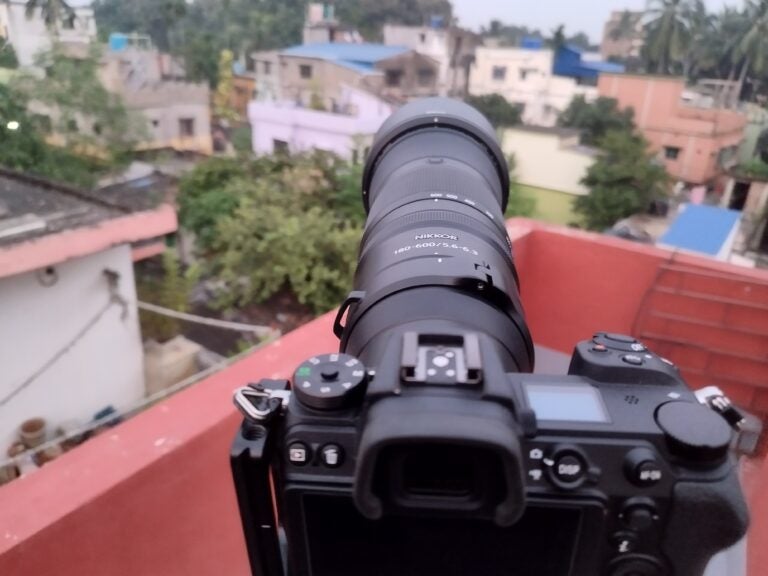Scope? Imager?
At first glance, it’s hard to tell that STELLINA is a piece of astronomical equipment. In its shutdown mode, it looks like a small monolithic lump of plastic and metal. When activated, however, it quickly comes to life. With a bit of a whirring noise, the center section begins to elevate and the whole unit rotates to start its observing sequence. I wasn’t sure if I was looking at something from Star Wars or a miniature of a scope from Mauna Kea. I commented at the show that it looked like R2-D2, and was told that Vaonis preferred EVE from the movie WALL-E.
The idea behind STELLINA, which is Italian for “little star,” is to approach observing in a different way than the norm. It has no eyepiece holder or any other parts associated with a typical amateur telescope. In fact, it is really a sophisticated astroimager or dedicated sky camera. In an interview at the 2018 CES show, Dupuy said the observation station “is a completely new generation of telescope, and with this product, the goal is to make astronomy more accessible for everybody.” We live in an age of connectivity, and STELLINA may be the next step for skygazers. Dupuy’s goal is to create a community of observers that allows for immediate access to images captured by this instrument.
STELLINA is a 3.15-inch (80 millimeters) refracting telescope. The focal length is 400mm, so it has a focal ratio of f/5. It has a field of view of about 1°, or twice the diameter of the Full Moon. The telescope objective is an apochromatic extra-low-dispersion (ED) doublet, which gives exceptional images. By definition, this is a rich-field telescope. The standard magnification is 50x, and it can zoom to 100x. This is a nice scope for large deep-sky objects, but not for planets; I tried to photograph Saturn, but found the image too small. In short, STELLINA was designed for observing nebulae, star clusters, and galaxies.
Operation
We’ve all heard, “There’s an app for that,” and that’s exactly how STELLINA operates. To use the telescope, it’s necessary to download an app from Vaonis. The app is available for both iOS and Android operating systems, and it’s a simple matter of linking your device with STELLINA’s wireless network. Like a lot of computer gear, there was no operator’s manual provided; rather, the user is directed to a video on YouTube that explains the ins and outs of operation. Setup is straightforward. The unit I tested came with a small, well-made tripod by the Italian company Gitzo. There was also a small circular bubble level, which is placed between the scope and the tripod, and an off-the-shelf ASUA power pack. This fits into a small compartment on the side of the telescope. Fully charged, you should be able to observe all night.
Next was linking the telescope with my iPad. When the app is first opened, it asks if you want to log in to your home network or Facebook. You can skip this step and go straight to observing. The next window has you connect to STELLINA. Once done, the scope goes into observing mode. The telescope rises from the main body and begins to point and sample the sky, using the GPS in your phone or tablet to determine its location. Once this is complete, you are ready to take your first image. For my observing platform, I used the patio table in my backyard, making sure the scope was level.
I opened the catalog of objects available in the app. You can choose from nebulae, galaxies, clusters, and solar system objects. My first target was the Dumbbell Nebula (M27). I loved watching the scope swing into position. A graphic of a rotating galaxy indicated the scope was searching. Once it locked onto the target, a black hole on the screen appeared to pull all the stars into an event horizon. Then, there it was: M27. I was amazed. Not only could I clearly make out the distinctive shape of the nebula, but color as well. This was from my light-polluted backyard!
After observing M27, I turned the scope on one of my favorite objects, the Double Cluster in Perseus (NGC 869 and NGC 884). I simply tapped the icon for these clusters and the telescope swung into action. As I watched on my iPad, I could see the image of the two clusters increasing in brightness and detail.
STELLINA uses a 6.4-megapixel Sony CMOS optical sensor (3,096 by 2,080 pixels), which provides a high-definition image. The optical system also has an inline city light suppression (CLS) filter to deal with light pollution. This was immediately apparent as the image began to build. STELLINA has an algorithm that repeatedly scans the object and stacks the images. This is not a fast process, but it’s worth the wait. The resulting image of the Double Cluster was great. In keeping with the social media aspirations of this product, I emailed the photos to friends before I even continued my observing.
A hit at parties
As a dedicated wide-field imaging system, STELLINA is great fun and produces outstanding pictures of deep-sky objects. Still, the long wait time in creating the images — up to 30 minutes — made me want to set up a visual scope to fill the time. STELLINA is a great specialized instrument, but I don’t think most backyard observers will give up their other telescopes. I would love to have this scope to capture and record my favorite objects, or as a centerpiece at parties. As Vaonis develops and adds new features, this instrument may become a real powerhouse for astroimaging.













